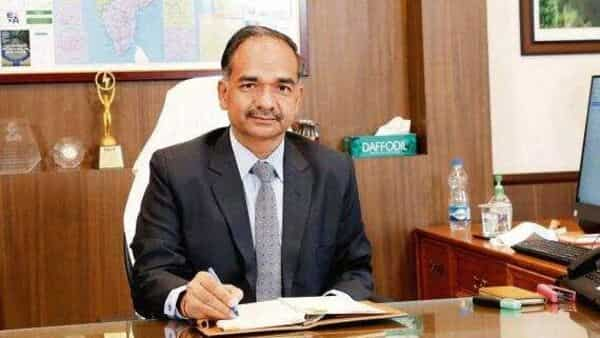[ad_1]
The first tranche of sovereign green bonds is expected to the tune of ₹16,000 crore. What is the expected allocation for these schemes?
The ministry of finance has created a group in which we have joint secretary (distribution) as a representative, and they are finalizing the modalities. My sense is that the energy sector as such is the main candidate for the green finance because about 70-80% of the funds required for the energy transition will be for the energy sector.
But in energy it is not only the ministry of power—we also have ministry of new and renewable energy (MNRE) and ministry of petroleum and natural gas. Coal ministry also undertakes work which helps the environment such as coal gasification and emission-reducing activities. The ministry of finance will take a view. The demand is huge.
You recently spoke about expansion of the RDSS scheme? What would that expansion entail?
Maybe we will require more outlay, because the need for modernization and upgradation which has been projected by states, needs a larger outlay which we are preparing and we will go to the ministry of finance. Right now, the figures are being worked out.
I think the major expenditure will be under RDSS, because in RDSS most of the DPRs (detailed project reports) have been sanctioned. States have been tendering the works so the works will start in this financial year, but major financial requirement will be in the next financial year.
So, RDSS funds will be required in the next financial year along with requirements for all other schemes such as transmission schemes for the North-east, then support to Bureau of Energy Efficiency, and Central Power Research Institute among others. These are the major heads.
You have earlier said that local bodies should clear their dues. Is there a mechanism you are looking at to ensure that the dues get cleared?
There are two interventions. First, we are saying that, put all the government electricity connections, including local bodies, on prepaid. So, one can consider excluding only the emergency services such as hospitals, drinking water services and street lighting. But all other government connections should be on prepaid. So, there will be no question on any arrears. And for these services and past arrears many states have instituted a mechanism of centralized payment of these dues from the amount which is earmarked for these local bodies. So, at state level they deduct those outstanding dues and they give it to discoms. Many states are doing it, so we have also advised other states to have the same mechanism. The prepaid mechanism is part of the RDSS pre-qualification. The states are already committed to it.
Going ahead, with the implementation of smart meters, will prepaid model be mandatory for retail power consumers?
Yes of course, everybody has to make it prepaid. It is within the scheme (RDSS) timeline, by FY25. Not only households, but also industries, commercial consumers and all. However, we are not mandating anything for the farmers. Let there be no confusion about it.
Several discoms were recently barred from the exchanges due to delay in payment of due. What is the status on that front?
As of now there is only one discom, which is Jharkhand (which is barred). So, people are regulated, they pay, then they are put back. There is a discipline which will continue. This mechanism has been very effective. All current dues have been paid and legacy dues instalments are being paid. There are only some exceptions where the regulation comes in, they payout and the regulation is lifted.
What are the main priority areas of energy transition for your ministry?
Our topmost priority is energy security. We will progress on energy transition while taking care of energy security. The key priority is universal access, clean energy for every Indian and for the Indian economy.
So, we have formulated our nationally determined contributions (NDC) keeping in view the energy needs of India, and while meeting that energy need, we will increase the share of non-fossil fuels. I think India has done exceedingly well in achieving the NDCs, which are I think are much more than what is required under the ‘common but differentiated responsibilities’ as per the UNFCCC (United Nations Framework Convention on Climate Change) and also the Paris Agreement. We will achieve our goals which we have set.
What will be the main thrust areas?
There are two key goals. One, the installed capacity for power generation from non-fossil fuel will grow up to 50% by 2030, which is currently around 41%. It is not a static thing, it will be 50% of the increased capacity. So, non-fossil fuel capacity today is around 170 GW. This 170 GW would go close to at least 400 GW. Second is the reduction of the emission intensity of our economy by 45% in 2030 with respect to the benchmark of 2005.
On India’s universal electrification, a study was to be done by UCLA. Is that happening?
Yes, the study is on for an independent assessment of the unprecedented endeavour that has been made successfully by India. That is being analyzed in the study—how it has been with quick mobilization and completion of these tasks. The study has been awarded, and they are doing the study. It is a study which will come out about the whole mission which has been completed, what has been the experience and how it has accomplished, along with learnings for others.
Download The Mint News App to get Daily Market Updates & Live Business News.
[ad_2]
Source link
John Miller has been writing about science, gaming, and tech culture for over a decade. He’s a top-rated reviewer with extensive experience helping people find the best deals on tech and more.


